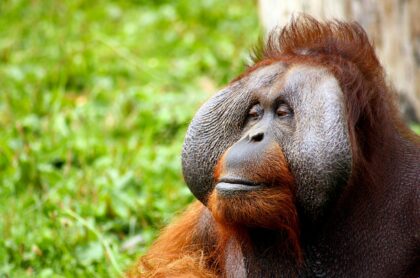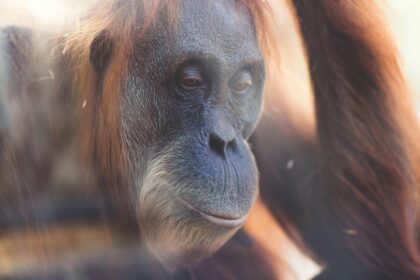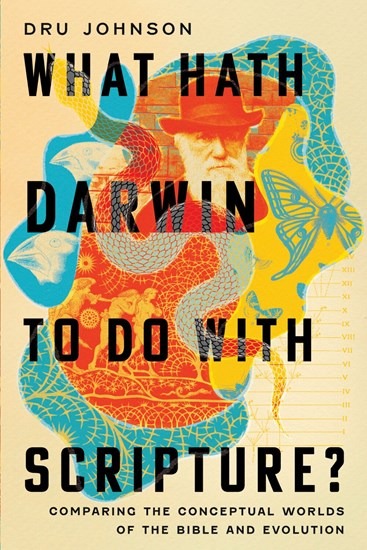
I know the world faces a lot of weighty issues right now. Some of you may be on college campuses with recent or ongoing police activity, cancelled or disrupted commencement events and other types of disturbances to what is usually a celebratory season. And all of that stems from events in Israel and Palestine, where staggering numbers of lives have been lost and many more irreversibly altered. I might wish science could offer answers to the uncertainty, but clashes of values are not readily adjudicated by its methods. There’s also the looming concerns about the spreading H5N1 influenza virus. There, science can at least tell us some things about the virus, but not whether or when it will evolve the ability to spread readily to and between humans and if that will mitigate its virulence. For most of us, avoiding unpasteurized dairy products is the primary concrete step we can take; if you work with cattle or chickens, additional precautions are warranted. So rather than dwell further on those topics, I thought we could use a story about healing.
The story comes to us from Indonesia where a research project observes orangutans in their natural habitat in a national park. There, Isabelle Laumer and colleagues observed a male orangutan engaging in a behavior that showed characteristics of being a wound treatment. The orangutan, Rakus, suffered a facial wound, possibly in a fight with another orangutan. He was then observed chewing leaves of a plant with known medicinal properties which is not frequently part of his species’ diet. He applied juice from the leaves to his wound before smearing pulp over it to cover it. Not as widely reported was the additional observation that he spent nearly twice as long resting while his wound was healing than he did before. While we cannot ask Rakus why he did these things, we do know that they are all consistent with effective wound care. And Rakus’ wound did heal fully, although of course he was not part of a randomized trial that might be able to assess if the wound would have taken longer to heal without the treatment regime.
Now, Rakus is not the first non-human creature to act in a health-promoting fashion. As the Laumer paper details, there are various types of self-medication that occur in animals and other organisms. The simplest of these, such as avoiding toxic exposures, can be managed by bacteria. But this particular category of topical therapy is more sophisticated and less common. The closest cited examples are leaves applied by orangutans to specific body parts which are not wounded–possibly for relief of pain or inflammation–and insects used by chimpanzees on wounds. Rakus is apparently the first documented case of an orangutan using anything to treat an open wound.
Let’s assume that the behavior is indeed deliberately self-medicinal. And let’s set aside the questions of what the orangutans consciously versus instinctually know about these plants and this activity, since those are tied to much deeper questions about consciousness and subjective experience. We may more fruitfully be able to ask questions about how the orangutans come to know what they know. It may be entirely instinctual, having been selected for because orangutans that happen to respond to these wounds and these plants in this particular way survive longer. Or perhaps there is some instinctual affinity for particular plants in various circumstances where the orangutans feel unwell, but this particular behavior is taught from one individual to another. Or it could be entirely learned and taught. These questions could in principle be tested by comparing different groups of orangutans in different circumstances.

We might also be able to explore how orangutans learn such behaviors. Do they test plants systematically or randomly? Are they able to compare notes, so to speak, or does every individual have to collect their own data? How do they know that a treatment worked? Do they have a sense of how long a wound should take to heal, or some notion of a control group? Or is the readout purely evolutionary, where the animals that picked and passed on ineffective treatments aren’t around in the long run to keep teaching those techniques?
Yet another possibility is that they are mimicking humans. The authors of the study propose that this observation may point to deep origins of wound care going back to some common ape ancestor. But it could also be the case that humans were the first ones to discover the medicinal properties of these plants, and then other apes adopted this knowledge. We know they can learn behaviors in this way, so it seems at least plausible. That’s not to downplay the intelligence of orangutans and other apes. I’m open to a variety of scenarios, just trying to lay out the full range.
There is a tendency to emphasize one direction or another. Some see the continuity between us and other apes while others see only the sharp line between us and them–possibly to the point of objecting at the phrase “other apes.” I think it is pretty clear there are marked differences, and at least in some settings when it seems as if that is being downplayed it may rather be that no one feels the need to state the obvious. I also think there are days when I look in the mirror and see Caesar from the recent Planet of the Apes films staring back at me. Of course, he’s a computer-generated chimpanzee, perhaps tweaked to seem more human or to map more readily to the acting of Andy Serkis. Nevertheless, I appreciate the sense of family resemblance one can experience–and I mean nothing negative by it to any party, despite the long and ongoing history of insults along those lines. At the end of the day, the data are the data; humans are not orangutans or chimpanzees even though we have more in common with them than we have with our beloved dogs and cats (for example). Maybe we can leave it at that, or maybe we can’t. Personally, if I’m going to lean, let it be to see more humanity in the world and not miss it when its there.

All this ape chat raising questions about evolution and its relationship to theology? Well, good news! Next month, I’ll be having a conversation with Dru Johnson about his book What Hath Darwin to Do with Scripture?. He’s a Hebrew scholar and the book explores how the worldview of the authors and audience of Genesis overlaps with concepts central to Darwinian evolution. You can be a part of this live event on June 12 at 8pm EDT if you register at this Zoom link. You’ll be able to hear what Professor Johnson has to say and ask questions during the Q&A. Sign up today so you don’t miss it!
Andy has worn many hats in his life. He knows this is a dreadfully clichéd notion, but since it is also literally true he uses it anyway. Among his current metaphorical hats: husband of one wife, father of two teenagers, reader of science fiction and science fact, enthusiast of contemporary symphonic music, and chief science officer. Previous metaphorical hats include: comp bio postdoc, molecular biology grad student, InterVarsity chapter president (that one came with a literal hat), music store clerk, house painter, and mosquito trapper. Among his more unique literal hats: British bobby, captain’s hats (of varying levels of authenticity) of several specific vessels, a deerstalker from 221B Baker St, and a railroad engineer’s cap. His monthly Science in Review is drawn from his weekly Science Corner posts — Wednesdays, 8am (Eastern) on the Emerging Scholars Network Blog. His book Faith across the Multiverse is available from Hendrickson.

Leave a Reply